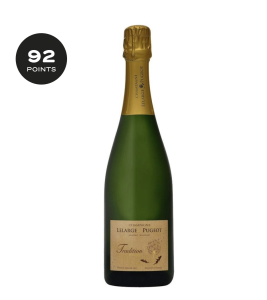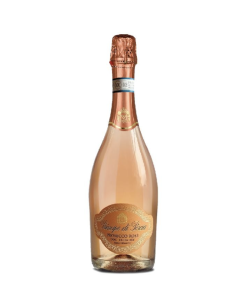
Sip & Savour: Discovering Sparkling Wonders
Sipping sparkling wines can give your palate new flavour sensations. But if you want to take your palate on a new journey, you might be unaware of the many sparkling wine options available. It also helps to know that sparkling wine producers follow a specific production process to make these wines exquisite in terms of taste.
Many sparkling wine types also have several characteristics that make them high quality options. These characteristics are unique to these wines and vary depending on the production process and grape varieties. But which sparking wines will you discover?
In this article, we explore the many sparkling wine types available and the production process wine producers follow to create them. We also look at the characteristics of sparkling wines and consider why they taste so delicious on the palate.
What Is the Production Process Behind Sparkling Wines?
Just before we explore the types of sparkling wines available, let’s consider the production process behind them. Wines such as sparkling rosé wines begin as a still wine that undergoes fermentation, which scientific studies call prise de mousse. This process occurs after sparkling wine producers add yeast, sucrose, and adjuvants to the still wine, and the combination is called liqueur de tirage.
The liqueur de tirage provides a yeasty, sweet sensory note to the wines. The flavour can differ depending on the type of yeast winemakers use for the sparkling wine, known as sur lies, and the variety of grape. From Pinot Noir, used in red wine, to Pinot Meunier grapes, these varieties add a light fruity flavour and earthy notes, respectively.
Now, sparkling wines contain three CO2 pressure bars at 20°C. The high gas pressure gives the wines an effervescence and foamy texture. This process provides the tickling sensation when you pour the wine into your glass and take a sip.
What Is Double Fermentation for Sparkling Wines?
Double fermentation for sparkling wines refers to two processes that give them texture and flavour. In many cases, the first fermentation process involves adding yeast and sugar to the still base wine, while the second fermentation process happens inside the bottle. The second fermentation process carbonates the wine with carbon dioxide.
Following fermentation, many sparkling wines undergo an aging process – the length depends on the wine. For example, Cava requires a nine-month aging process, while champagne requires approximately 15 months.
What Are the Main Types of Sparkling Wines?
Even if you are not a sommelier, you might already know several types of white grape sparkling wines. From champagne and prosecco to Cava and crémant, there are several options to choose from. We explore the main types of sparkling wines here.
Champagne Sparkling Wines
White grape champagne follows a specific production process called méthode traditionnelle, which involves adding dissolved carbon dioxide to the wine. Wine producers also use a double fermentation process with champagne, giving the wine a light, bubbly texture. The winemakers seal the contents inside after trapping yeast and the carbon dioxide in the bottle.
The grape varieties wine producers use to make champagne include Pinot Noir, Pinot Meunier, and Chardonnay grapes. These grapes provide a palate-pleasing acidic, light flavour, which you will find in the Champagne 1er Cru Extra Brut Tradition.
Another example of delicious sparkling champagne is the Champagne Extra Brut Grand Cru Eloquence Blanc de Blancs. From the Champagne region of France, this type of sparkling wine is fresh and light. Its flavour notes include acidity, lemon peel and mint, and background notes of white flowers. You will also detect a hint of palatable bitterness.
When selecting champagne, it’s important to remember that both champagne and chardonnay wines contain chardonnay grapes. However, chardonnay is one example of a still white wine that contains 100% chardonnay. It is a subtle characteristic difference that can help you distinguish between chardonnay and champagne.

Prosecco Sparkling Wines
Produced in the north-east region of Italy, Prosecco sparkling wines contain the glera grape variety. Winemakers harvest this grape, press it, and clarify it before fermentation. Fermentation involves adding yeasts and letting the wine ferment for 15 to 20 days at a temperature of 16 to 18°C.
One refreshing Prosecco sparkling wine that undergoes this process is the Prosecco Doc Extra Dry bottle, which contains green apple and peach notes. It has layered pear and floral flavours that build in the mouth. Prosecco bottles like these are typically a dry sparkling wine or demi secs (half-dry). However, some varieties, like the Prosecco Doc Extra Dry, contain sweeter notes to please your palate.
Matching Prosecco wines with food is easier than you might think. With the grape variety’s sharp and sweet characteristics, and the fermentation process, Prosecco works well with white meats and seafood. Its light tickling bubbles created during fermentation also pair well with appetizers.
Sparkling Rosé Prosecco Wines
The main difference between Prosecco sparkling wines and sparkling rosé Prosecco wines is the grape variety. Select a sparkling rosé Prosecco wine, and you can expect that 15% of the grape variety is Pinot Noir in addition to 85% glera grapes.
As part of production and storage, sparkling rosé Prosecco wines require a unique process. Experts note that this wine type can experience degradation over time due to its photosensitivity. Its colour, aroma, and flavour can alter if it undergoes degradation during production.
During production, sparkling rosé prosecco winemakers are also aware that the anthocyanin pigments give the wine its pale pink colour. These pigments are also sensitive to temperature changes, so special storage is important as part of the production method. It is, therefore, best to store this wine in 5°C, dark spaces.
A delicious example of sparkling rosé Prosecco wine is the Prosecco Rosé Extra Dry Millesimato Doc. It contains notes of soft red fruits that entice the palate and nose and pairs well with seafood.

Cava Sparkling Wine
Cava also undergoes a second fermentation process, like champagne. This Spanish sparkling wine contains carbon dioxide, which winemakers seal within the bottle, so one of its characteristics is its pleasant light texture. It is slightly less acidic than Champagne. Catalonian winemakers in Penedès make Cava, and 95% of Cava production occurs in Catalonia.
During the Cava wine-making process, winemakers use specific grape varieties, including Macabeu, Xlarello, and Parellada. These grape varieties differ from the Chardonnay, Pinot Noir, and Pinot Meunier varieties that champagne contains, which is why Cava is less acidic.
The initial fermentation process happens in oak barrels or stainless steel tanks, where the still wine base will remain with the added yeast. Winemakers then add the grape varieties and sugar quantities to initiate the second fermentation and make the disgorgement process easier.
Crémant Sparkling Wine
From Crémant de Limoux to Crémant de Jura, this sparkling wine originates from several regions of France. It contains vivacious bubbles, and some of its characteristics include sweet and smooth textures and flavours, such as honey hints or green apples. These characteristics will vary depending on the region of France your Crémant sparking wine originates from.
Some of the specific grape varieties winemakers use to create the Crémant wine include Chenin Blanc or Pinot Blanc. After harvesting these grape varieties, winemakers commence bunch pressing and a lees aging process.
Crémant also undergoes a double fermentation process. The initial fermentation occurs in a barrel, and the second occurs within the bottle. This process enhances the creamy characteristics and its intense richness.
Explore High-Quality Sparkling Wine and Get It on Your Doorstep with Wine Online
If you want a refreshing beverage to match your delicious food, explore high-quality sparkling wines with Wine Online. Our selection of wines receives excellent quality ratings, with many exceeding 90 points and delivering remarkable mouthfeel and texture. For tickling, vivacious bubbles and zingy flavour that builds in the mouth, get sparkling wine delivered to your home from Wine Online.





